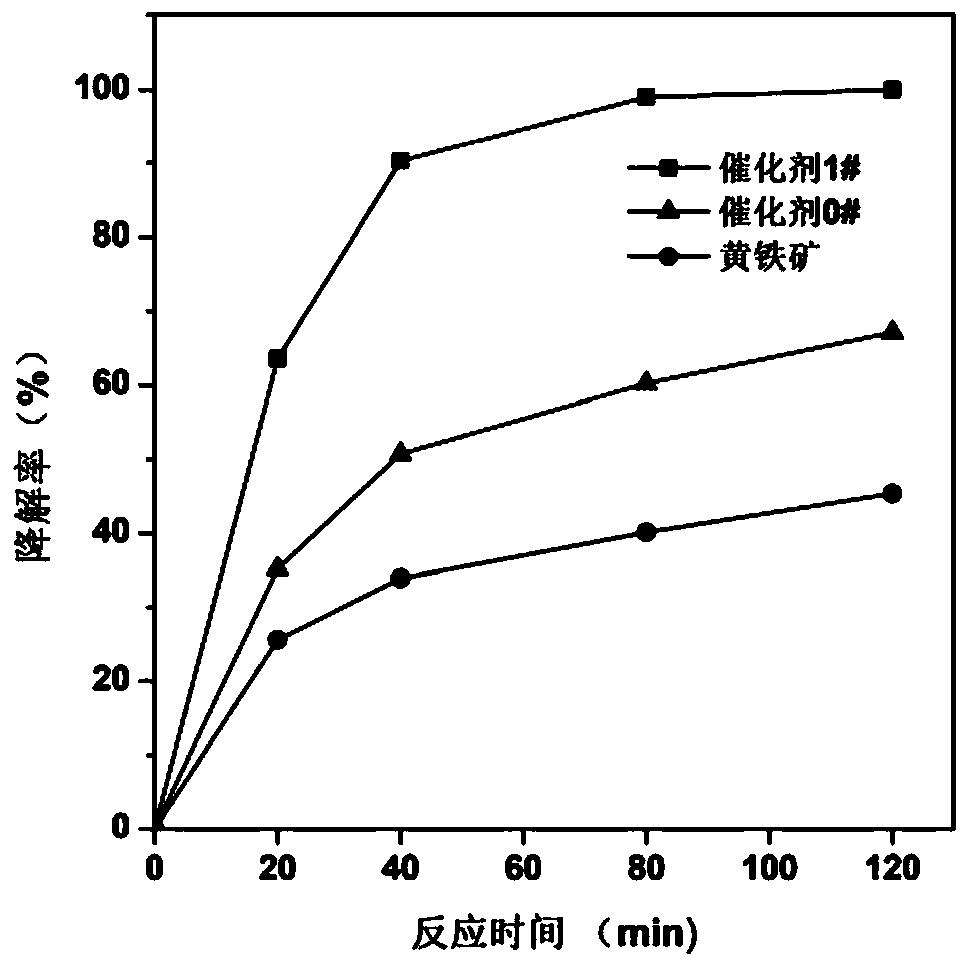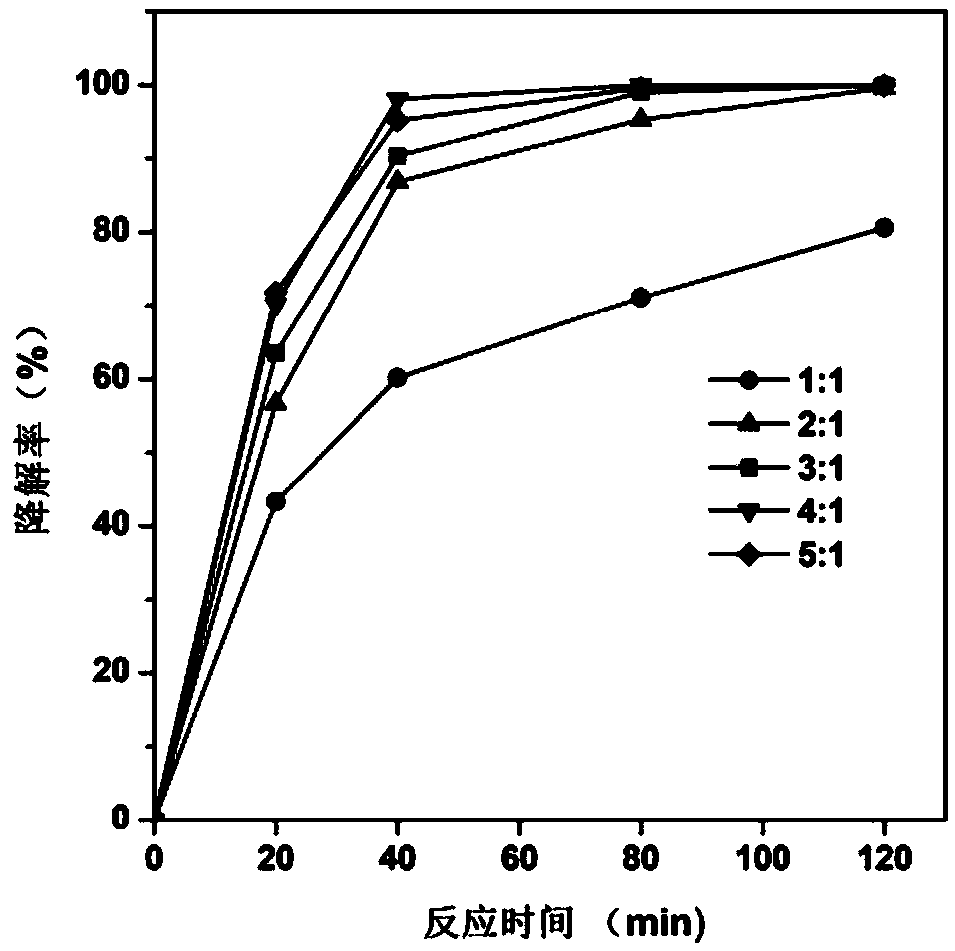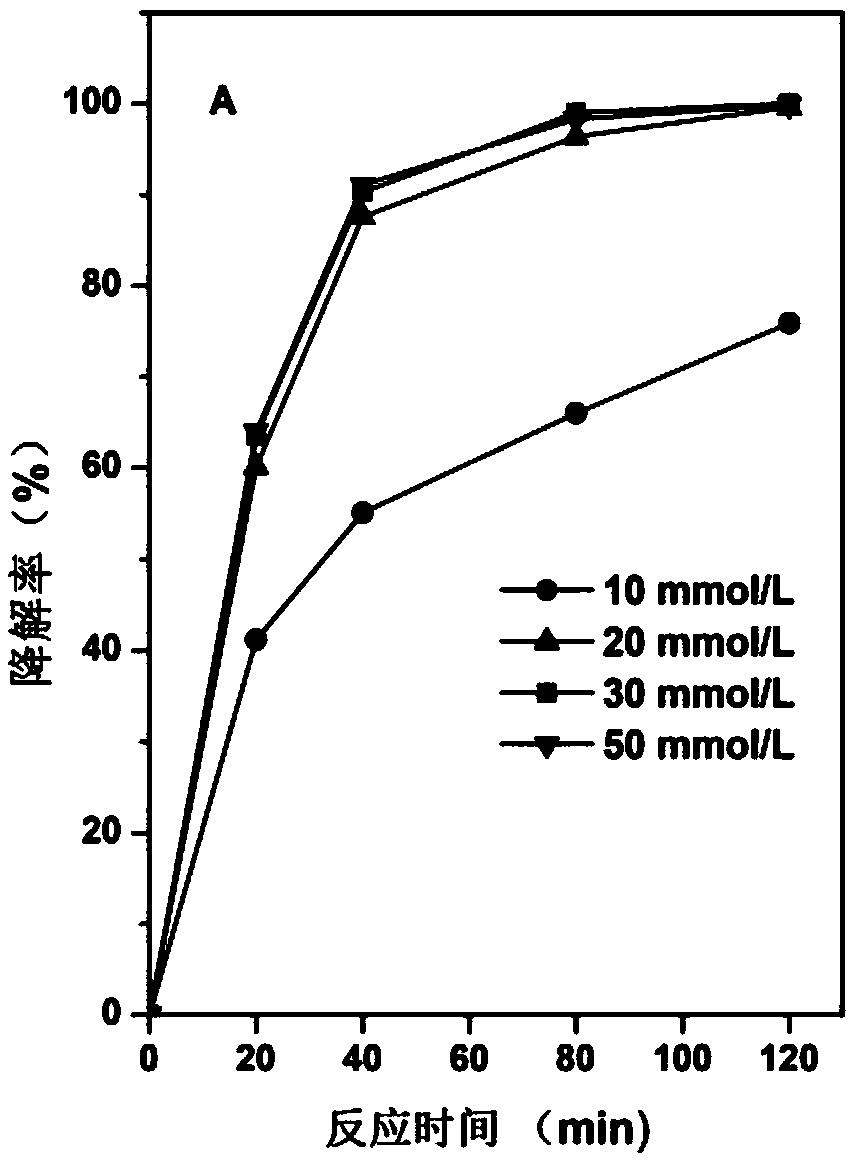Modified biochar based composite Fenton catalyst and pollution treatment method
A treatment method and biochar technology, applied in the field of organic pollution treatment, can solve the problems of human health impact, water pollution and ecological environment, etc., and achieve the effects of low price, abundant resources, and improved degradation efficiency
- Summary
- Abstract
- Description
- Claims
- Application Information
AI Technical Summary
Problems solved by technology
Method used
Image
Examples
Embodiment 1-1
[0030] Embodiment 1-1: Preparation of composite Fenton-like catalyst
[0031] Add 200g of biochar to 1L of copper sulfate solution with a concentration of 4.8g / L (equivalent to 30mmol / L). After adsorption for 180min, the solid is separated by centrifugation, and then placed in a tube furnace for vacuum heat treatment at 650°C for 1.5h. Cool to room temperature to prepare modified biochar. Take modified biochar 100g, mix with 33g pyrite powder (the mass ratio of modified biochar and pyrite is 3:1), grind to particle diameter less than 0.15mm, obtain composite Fenton catalyst (catalyst 1 #).
Embodiment 2-1
[0032] Embodiment 2-1: organic pollutant treatment method
[0033] Taking phenol as a model organic pollutant, the specific effects of the composite Fenton-like catalyst and pollution treatment methods were investigated. In the phenol solution that 1L concentration is 300mg / L, add 30g catalyst 1# prepared in the embodiment 1-1, after stirring and mixing uniformly, add 9mL concentration and be the sodium persulfate solution (equivalent to 9mmol / L) of 1mol / L, stir continuous response. When the reaction was 20, 40, 80, and 120 minutes respectively, samples were taken to measure the total organic carbon content (TOC) in the simulated wastewater. Calculate the degradation rate of phenol under different reaction times according to the change of TOC, the results are shown in figure 1 .
Embodiment 1-2~1-5
[0041] Examples 1-2 to 1-5: Based on Example 1-1, when preparing a composite Fenton-like catalyst, 100 g of modified biochar was mixed with 100, 50, 25, and 20 g of pyrite powder, and ground to The diameter is less than 0.15mm, and composite Fenton-like catalysts 2#, 3#, 4#, 5# are obtained, and the mass ratios of modified biochar and pyrite in each catalyst are 1:1, 2:1, 4:1 respectively and 5:1. According to the method described in Example 2-1, each catalyst (2#: 15g; 3#: 22.5g; 4#: 37.5g; 5#: 45g) containing the same quality pyrite (7.5g) was put into respectively In the phenol solution, the degradation rate of phenol under different reaction times was obtained, the results are shown in figure 2 .
[0042] figure 2 The results show that: when the mass ratio of modified biochar to pyrite in the catalyst is 1-5:1, the degradation rate of organic pollutants by using the technical solution of the present invention is much higher than that of using pyrite alone as a catalys...
PUM
 Login to View More
Login to View More Abstract
Description
Claims
Application Information
 Login to View More
Login to View More - R&D
- Intellectual Property
- Life Sciences
- Materials
- Tech Scout
- Unparalleled Data Quality
- Higher Quality Content
- 60% Fewer Hallucinations
Browse by: Latest US Patents, China's latest patents, Technical Efficacy Thesaurus, Application Domain, Technology Topic, Popular Technical Reports.
© 2025 PatSnap. All rights reserved.Legal|Privacy policy|Modern Slavery Act Transparency Statement|Sitemap|About US| Contact US: help@patsnap.com



